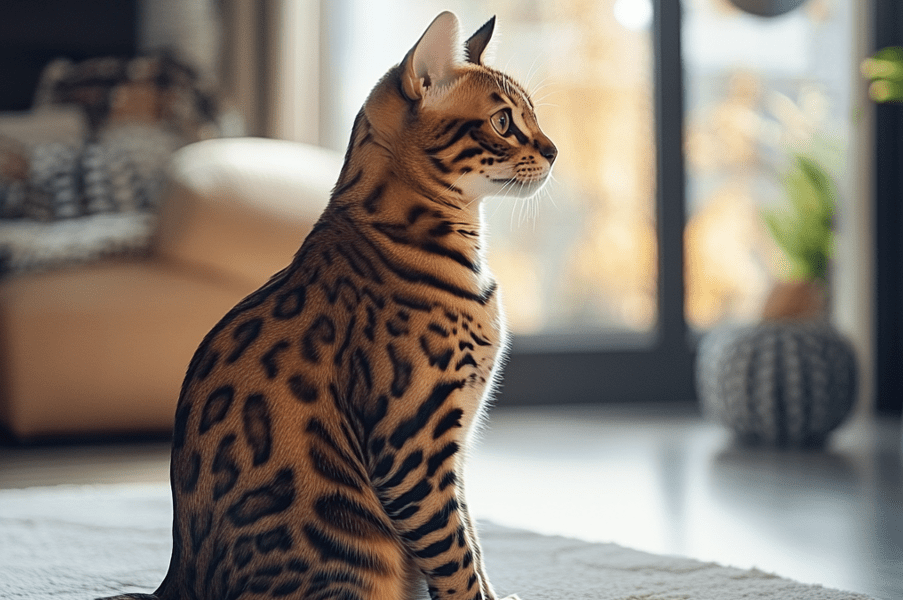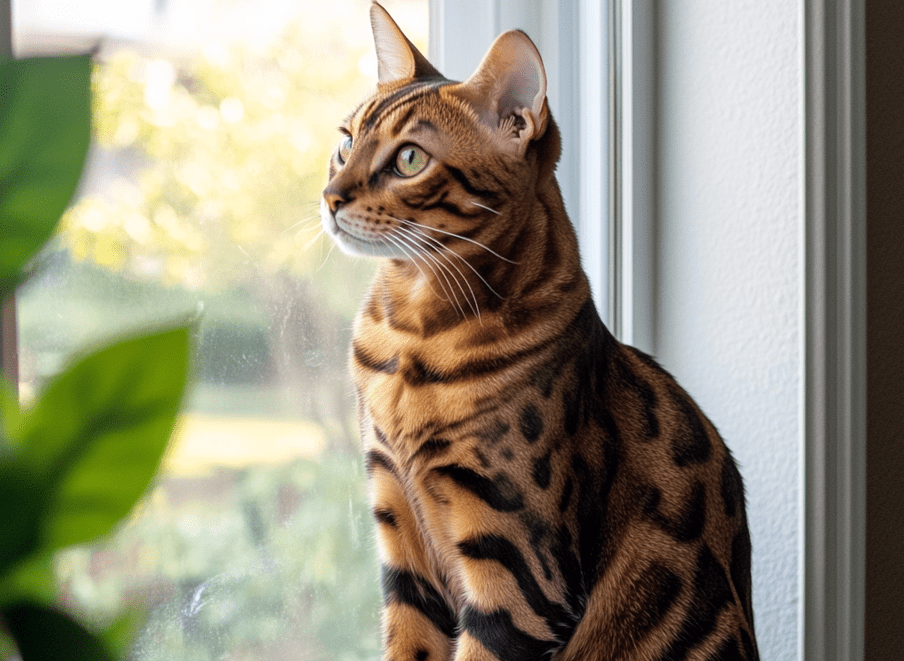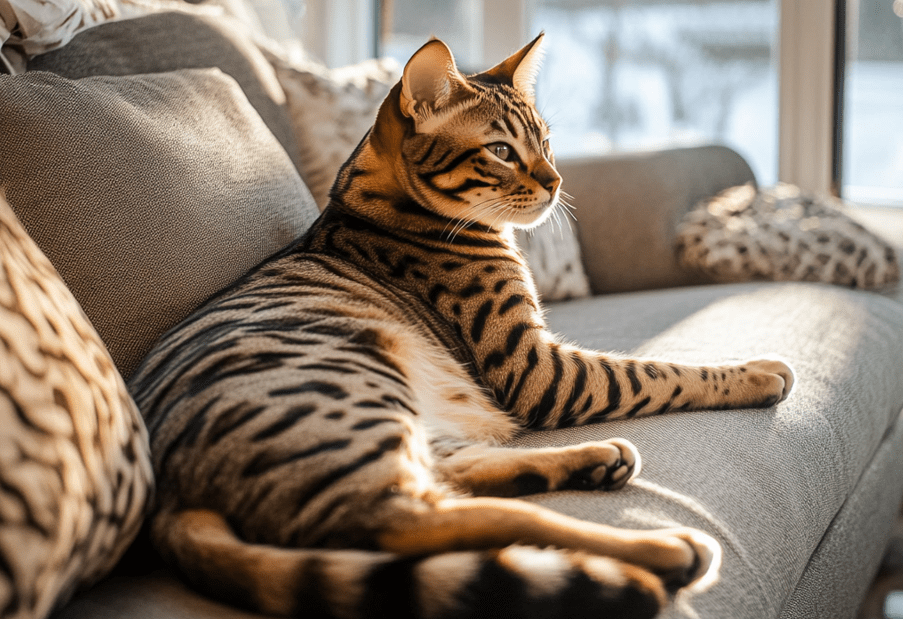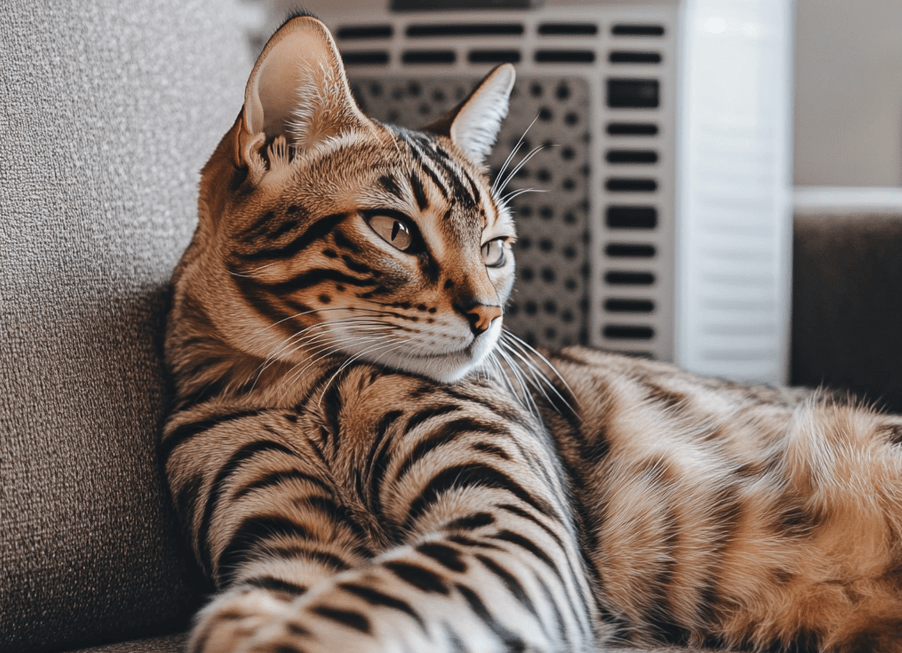
If you love cats but have a problem with allergies, you’re not the only one. Many pet owners suffer from allergy symptoms because they love their fur babies. As a result, many people seek out hypoallergenic cat breeds that are less likely to cause an allergic reaction. It is important to understand what hypoallergenic means. The Hypoallergenic term is associated with those products that cause fewer allergic reactions. In this context, Bengal cats are regarded as hypoallergenic. But this doesn’t mean people who are allergic to cats won’t have a reaction at all. Bengals are relatively less likely to trigger an allergic response compared to most other breeds. Let’s find out more about Bengal Cat Hypoallergenic Facts and see why this unique breed might be the right match for allergy sufferers.
The Cause of Cat Allergies
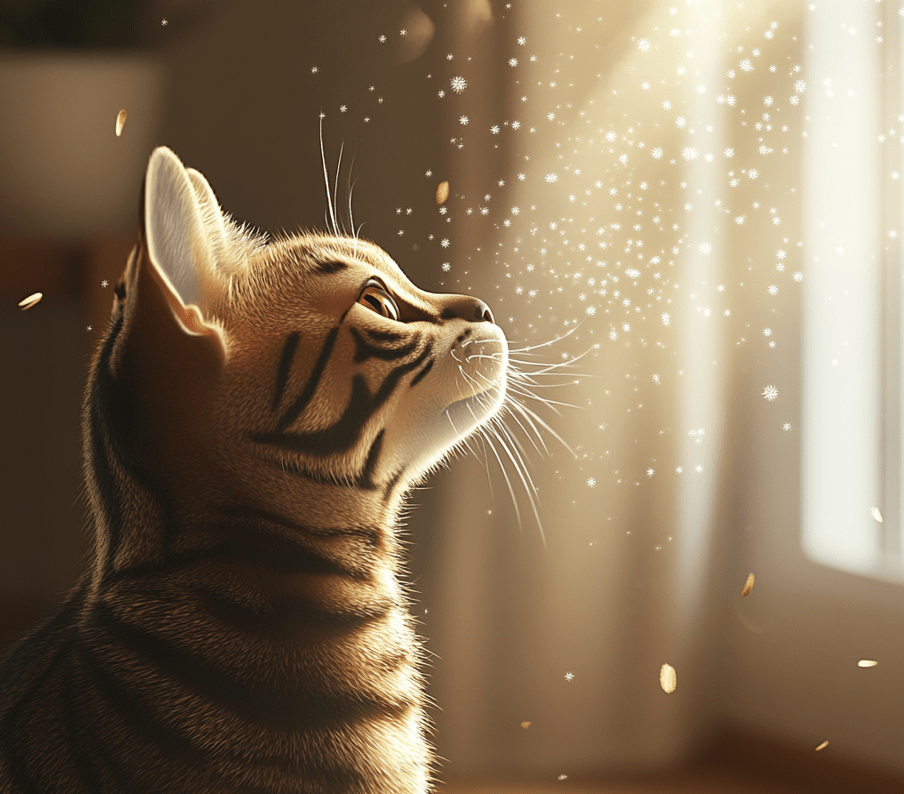
A lot of people claim they are allergic to cat hair, but this is seldom true. Cat allergies are often caused by a protein called Fel d 1, found in cats’ saliva and dander. The exact cat benefits of this protein are unknown, but in humans, it can cause a variety of allergic symptoms, including sneezing, itching, and eye irritation.
Cats naturally produce Fel d 1 in their saliva and sebaceous glands. This protein is transferred onto their fur and skin as cats groom. When it sheds dander and fur, particles of Fel d 1 are released into the environment. These allergens can then build up in pet bedding and other high-traffic areas of the home where cats spend a lot of time.
How to Minimize Cat Allergies
Unfortunately, there is no sure-fire way to entirely prevent an allergic reaction to cats. But if you have allergies, there are several strategies that can help cut your exposure to allergens. Regularly grooming your cat and cleaning its bedding will reduce the number of potential allergens in your home. Vacuuming regularly, and avoiding air fresheners or scented candles, can help too.
If you’re one of the people who suffer from allergies but would very much like to have a pet, there is good news. There are some cats breeds recommend if you have allergies.
The breeds produce smaller amounts of the protein Fel d 1, which is the leading contributor to allergies caused by cats. This means they are less prone to allergens, and so a better choice for allergy sufferers.
Are Bengal Cats Hypoallergenic?
Bengal cats are considered a low-allergy breed, but that does not mean that all Bengals are hypoallergenic. Every feline has its own characteristics, and some may cause allergic reactions more than others. Before adopting or buying a Bengal cat, it is highly important to ask yourself if they fit your lifestyle and if their needs can be met in your home. There are also several other cat breeds with unique coat type and personalities that are considered of mild allergic type. A few good researches will help you to find the breed that will be the most suitable and nice for your family.
If you’re thinking about a Bengal, speak with breeders or adoption agencies about the allergen levels in their cats. Regular grooming of the cat and a hygienic diet can help manage allergens. With sufficient information; one can identify the right type of Bengal cat that will suit your allergies.
Why Are Bengal Cats Low-Allergen?
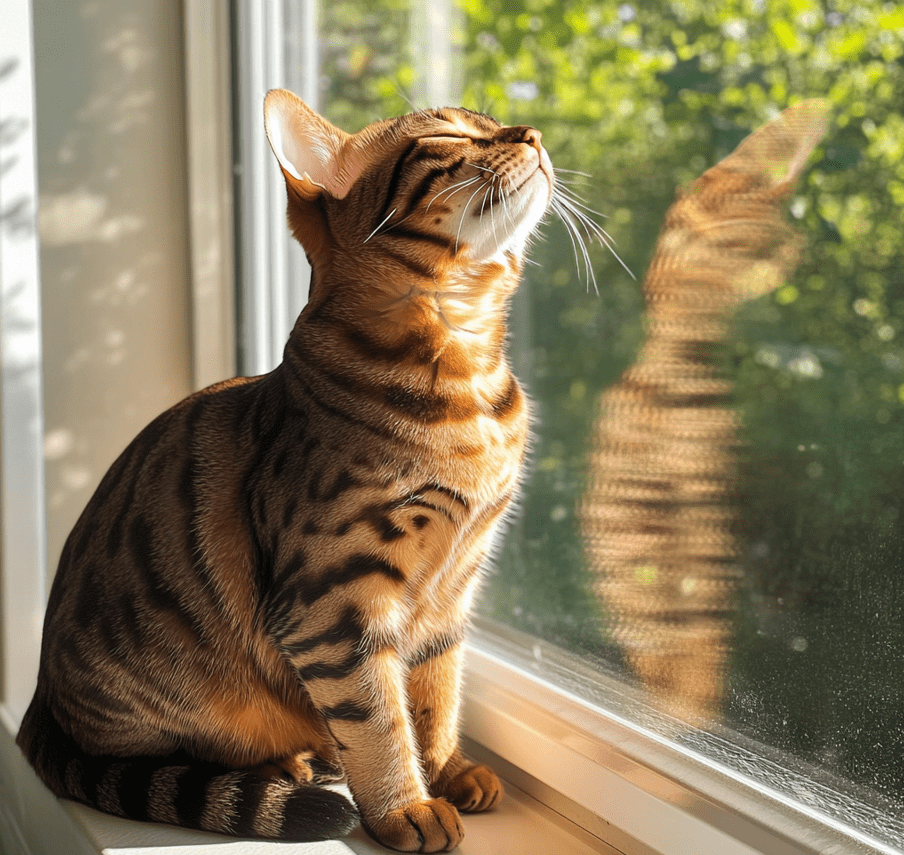
Many people notice that a Bengal cat has a unique coat. Their hair is short, course, and silky — similar to a rabbit’s fur. Bengals do shed naturally, but they usually do so less than most cat breeds, so fewer allergens are spread around the house.
Furthermore, Bengals also groom themself less than other cats. Cats groom themselves for various reasons, including scent marking and hygiene. But because of a low-maintenance coat, they require less grooming. This causes less grooming behavior, which means fewer allergy-inducing particles in the home.
However according to some sources Bengals may create lower levels of the allergenic protein Fel d 1 than other breeds do. No reputable scientific studies currently validate this claim, and it is unwise to operate under this assumption. And if you are a little bit of a cat person, you should know that, male cats produce more Fel d 1 than females, while unneutered males have higher levels than neutered ones. So when managing allergies, thinking about the gender of a cat could help.
How to Manage Cat Allergies When Getting a Bengal
If you or your family suffer from cat allergies, it’s important to be aware of how your body will react to a Bengal before adopting one. Bengal kitties are quite emotional, and rehoming can be traumatic. So let’s try to avoid rehoming as much as possible.
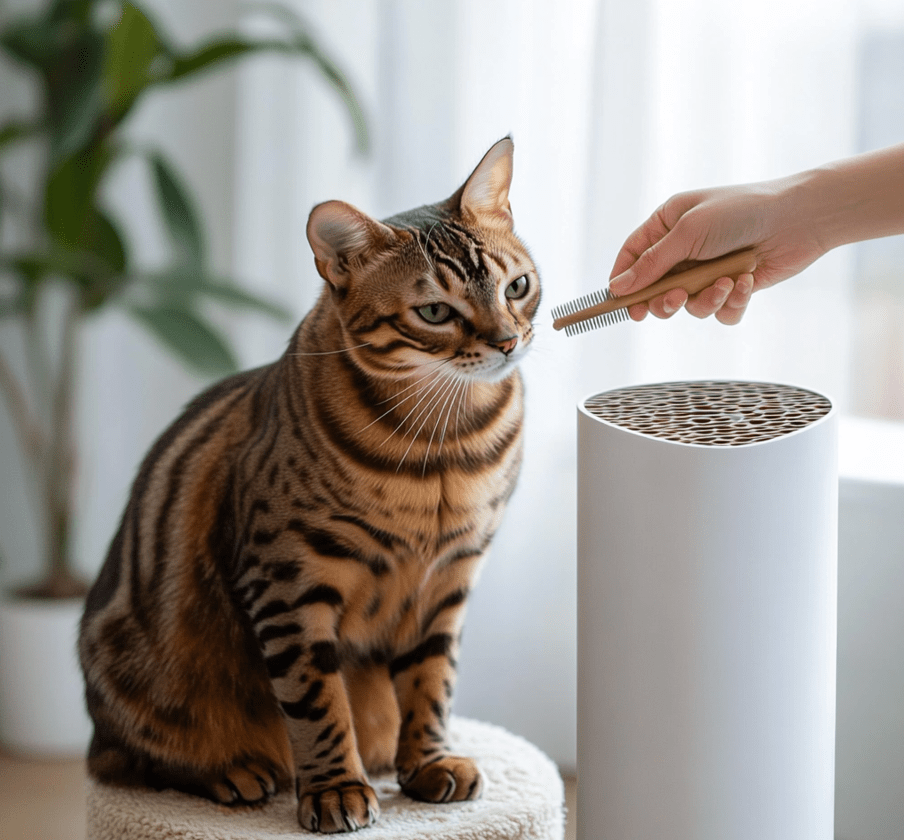
Spend time with the Bengals up for adoption to check compatibility. Go to a friend who has a Bengal or meet some at a reputable breeder. This gives you a chance to interact with the cats and see if you have any allergies. Visit more than once and spend time with both kittens and adult Bengals. Take note of how you felt around them. That can help you determine whether a Bengal is right for you.
Managing Cat Allergies for Bengal Cat Lovers
For those who are committed to sharing their lives with a Bengal cat, despite the allergy issue, there are some strategies that can minimize the allergic reaction and ensure that you live comfortably.
Because all cats produce saliva, urine, and dander as a part of their normal function, they will never be able to rid themselves of these allergens completely. But by taking active steps to limit the dissemination of allergenic proteins throughout your house, you can greatly reduce allergic responses.

Effective Strategies for Allergy Management:
Provide an Appropriate Diet
A nutritious, species-appropriate diet contributes to healthy skin in cats, much like how proper nutrition and hydration contributes to healthy skin in humans. High-quality food can offer benefits for your Bengal’s skin, such as less dryness, less dander, and fewer allergy triggers. Diet should be the first priority in the managements of allergic reactions.
Keep Your Living Space Clean
Regular cleaning is absolutely necessary. Wipe down household surfaces regularly to avoid allergen build-up. Replacing carpets with hard flooring could be useful because allergens get stuck in soft, porous materials.
Invest in a HEPA Air Filtration System
One of the most common cat allergens, the Fel d 1 protein, is very lightweight and stays in the air for a long time. Install a high-efficiency particulate air (HEPA) filter, which can physically remove a high percentage of particles from the air, noticeably reducing airborne pollen and other allergens.
Avoid Direct Contact with Your Bengal
Minimize direct exposure by incorporating easy habits: don’t kiss your cat, wash your hands after handling them and keep kitties out of the bedroom so you have a clean sleeping environment. Delegate litter box clean-up to a non-allergic member of the household. Just remember that your restricted interaction comes from health—not a lack of love!
Regular Grooming
Bathing these cats can be stressful for the cat and can cause drying of the skin, which increases dander production. And baths only provide temporary relief from allergies. Instead of grooming your Bengal, you should regularly brush them to remove loose fur, and wipe them down with a damp microfiber cloth to cut down on dander and the scattering of hairs.
Maintain a Clean Litter Box
To minimize airborne allergens from cat urine, enlist a non-allergic family member to clean the litter box at least twice a day. And consider putting a small air purifier near the litter box to help with allergens in that area, too.
Consider Allergy Medication
If lifestyle changes aren’t enough, medical treatments like allergy shots, antihistamines or decongestants may help. Check with a medical provider for which option may be best for minimizing your symptoms.
When following these tips, Bengal cat enthusiasts with allergies can live a happier and more comfortable life.

